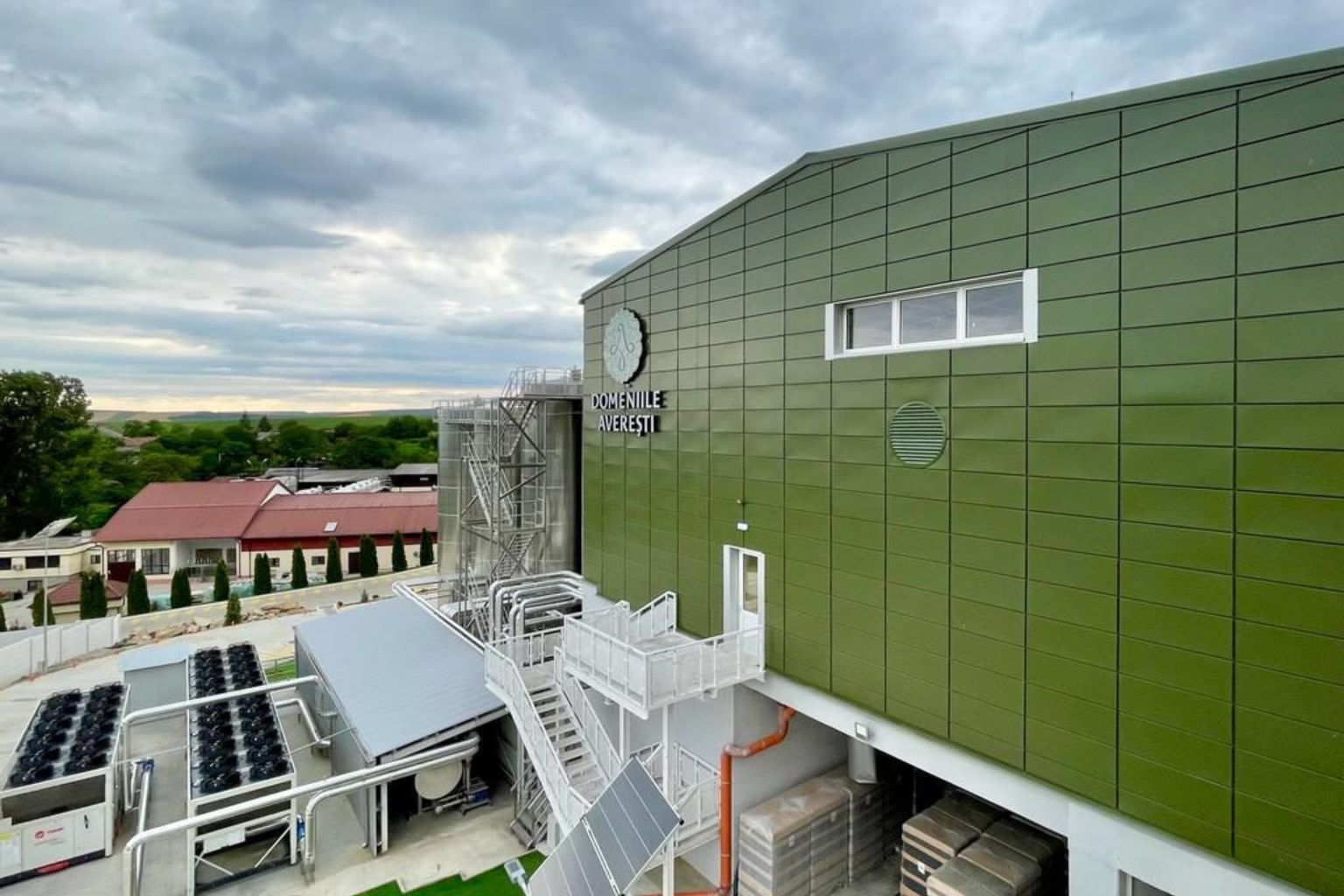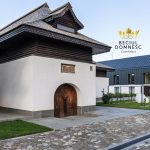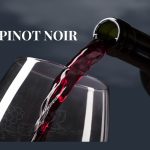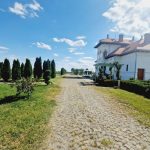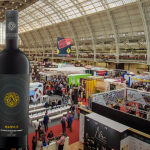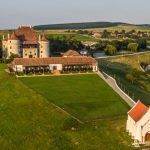Averești Estates was the first producer to believe in the Wines of Romania project, and after more than three years, this partnership has evolved into a special, heartfelt relationship in which we share in each other’s successes. Such as the three titles of excellence won this week at the USA Wine Ratings 2025: a gold medal and 93 points, Wine of the Year Romania 2025, and Best of the Year by Packaging — and these are just a few…
- The Magic Words at Averești Estates: Technology and History
- A Picturesque and Romantic Giant
- Latest Technology at Averești Estates
- From Harvest to Winery
- Fighting Bitterness
- Expensive, Rare, and Efficient
- Sauvignon Blanc from Averești Estates, All Over the World
- Energy Independence and Sustainability
- Tasting? Of Course! A History Tasting…
- You Have to Go to Averești Estates to Understand the Place
I had known Crina Duluțe and Rareș Florea, the two people in the company you see most often in public, for many years. I had only met the founder of the estate, Constantin Duluțe, occasionally, at wine fairs and festivals. I have enjoyed their wines for quite some time, and I’m as happy as a child every time they surprise the market with something new (the white vinified Busuioacă is delicious!). But, to my shame, I had never actually been to the winery.

So there I was – a passenger without a driver’s license in a rental car driven by Marinela Ardelean, with Andreea (our positive-vibes and healthy-snacks teammate) full of energy in the back seat – when the Wines of Romania team decided to visit the winery quickly, just before harvest began. Nothing could have prepared me for what I was about to discover. Below is the account of a visit that makes me believe no one should ever write about wines and producers without first seeing their winery.

The Magic Words at Averești Estates: Technology and History
In the Wines of Romania podcast episode featuring Crina and Constantin Duluțe, there’s a moment when Crina says that at Averești Estates, they planted local grape varieties not just to have them documented, but to turn them into great wines and to prove their quality to the world.
And Constantin discreetly adds, “and I brought the technology to make it possible.” If you’ve never been to Averești Estates, you might have missed this point. The truth is, from this perspective, Averești Estates is unique in Romania.
The focus on local varieties, and on native grapes in general, comes not only from the desire to do something different from other wine producers, but especially from respect for the place and its history.
A bow not only to the founders, Ștefan Negruzzi and Rene Faure, but to all the generations before them, who established grape varieties, vineyards, and a deep bond between people and wine – a bond that today is reflected in the effort to align with the latest technologies, without giving up the taste of history.
A Picturesque and Romantic Giant
The road to Averești Estates isn’t the easiest, but it’s smooth and spectacular – wild landscapes, forests, and breathtaking views at every turn. And at the end, on the edge of the village, stands a true giant. A platform with dozens of fermentation and storage tanks, 15 meters tall and 100,000 litres each, where you can’t help but feel small.
You climb to the top and see them from above, then step into the room where the wine is born – the press area – and from there into the “brain” of the winery, a control panel that manages absolutely everything. Then you step outside to the platform where the grape trailers from the vineyard arrive to unload. Even these have traffic lights to signal when they can unload.
From the edge of the terrace, beyond the estate fence, you can see a small chapel surrounded by a few dozen crosses. This is where René Faure, the oenologist who established the first modern vineyards at Averești Estates on the estate of boyar Ștefan Negruzzi, rests.
He would surely be proud of what is happening here today. A little further away, hidden from view, lies the boyar’s old manor house, now in its final renovation phase and soon to open its doors to guests.
Latest Technology at Averești Estates
From the late 1990s, Romania began modernising its wineries, supported by European funding. Plastic containers, old cement vats, concrete floors, and mould-covered walls disappeared, replaced by epoxy resin, stainless steel tanks, cooling systems, and carbon dioxide recovery circuits. At most wineries now, cleanliness is “pharmaceutical-grade.”
At Averești Estates, changes came a bit later, starting in 2010, but this was a big advantage – the technology adopted was already second-generation, and in some cases even more advanced or not yet used anywhere else.
From Harvest to Winery
Most producers prefer to pick grapes early in the morning or even at night to preserve aromas. Here, not only is the harvest done in the morning, but the grapes (already destemmed by the harvesters) are protected under a blanket of dry ice. Not primarily for cooling – although that helps – but because it creates a layer of CO₂ that prevents oxidation.
Two decades ago, mechanical harvesting was considered far inferior to hand-picking and used mainly for entry-level wines. Today, technology has flipped that view – machines pick faster and cleaner, with almost no impurities. A state-of-the-art sorting table immediately removes any stray leaf or unsuitable grapes that reaches the winery.
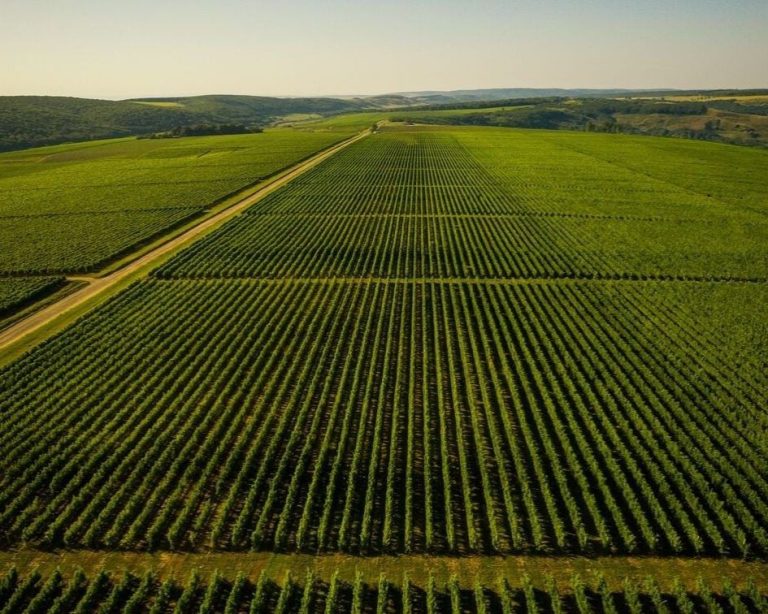
Fighting Bitterness
As neutral as stainless steel is, it can even trigger the release of polyphenols when in contact with must, leading to bitterness. Here, before grapes enter the press, the interior is coated with a thin film of plant protein to prevent contact between must and metal.
The must’s path to fermentation tanks is designed with as few directional changes as possible, avoiding sharp turns where the must “hits” the pipes hardest. All of this is in pursuit of the cleanest, most aromatic wine, faithful to its place of origin.
Expensive, Rare, and Efficient
Dr. Eng. Claudiu Crețu, the production director guiding us through the winery, hints that every corner of the estate houses only the most advanced equipment available. From gravity-fed design to fermentation and storage tanks, everything is designed to ensure maximum quality.
However, he seems most proud of the press filters for the lees—one of the winery’s secrets. They are expensive, at €150,000 each, but they concentrate the aromas and greatly contribute to creating highly expressive wines.
The choice of vessels was no coincidence either. Yes, large capacity is needed to handle 650 hectares, but both their height and their 100,000-liter volume are more about the production philosophy.
At such a height, when well cooled, these tanks retain carbon dioxide much more effectively, which not only protects the wine but also perfectly preserves its freshness. If you look closely, you’ll notice that each tank also has its own motor—this is what performs the bâtonnage process, in which fine lees are stirred into the wine, an interaction that “rounds it out” and gives it greater complexity.
Sauvignon Blanc from Averești Estates, All Over the World
Having a consistent volume of quality wine is key for exports, especially when it comes to internationally awarded wines.
“As great as it is to win gold with 5,000 or 10,000 litres, no retailer will invest in a new label for such a small volume. But with 100,000 litres, you can negotiate with major networks,” explains Rareș Florea, the company’s country manager.
Proof came in 2022, when Averești Estates won the only gold medal for Sauvignon Blanc in Amsterdam – beating competition from Australia, New Zealand, the USA, and Chile. The wine quickly found its way into Costco stores worldwide (USA, Spain, Japan, etc.) and Aldi and Target in the USA, a feat unmatched by any other Romanian producer.
What seemed impossible 20 years ago, making great wine in large volumes, is now a reality, year after year, harvest after harvest, thanks to technology.
Energy Independence and Sustainability
From the 15-meter-high catwalks over the fermentation tanks, one detail stands out: all the roofs are covered with solar panels. It makes sense, considering the energy needed to keep wine cool.
Cooling is taken so seriously here that there’s a separate system just for the top manhole sleeves, where sunlight might slightly warm the wine.
While the insulated stainless-steel tanks lose very little heat, total energy consumption is high, about 1,500 MW per year, requiring a 500 kW power group plus a backup generator.
Already, 400 kW of solar capacity is installed. Next, a small photovoltaic park is planned on a nearby land plot to achieve full energy independence.
Another surprise: beneath the press room lies a large empty space, above the old cellars, currently under renovation. Here, trucks load pomace after pressing, which is returned to the vineyards as natural fertiliser, sustainability and circularity in action.
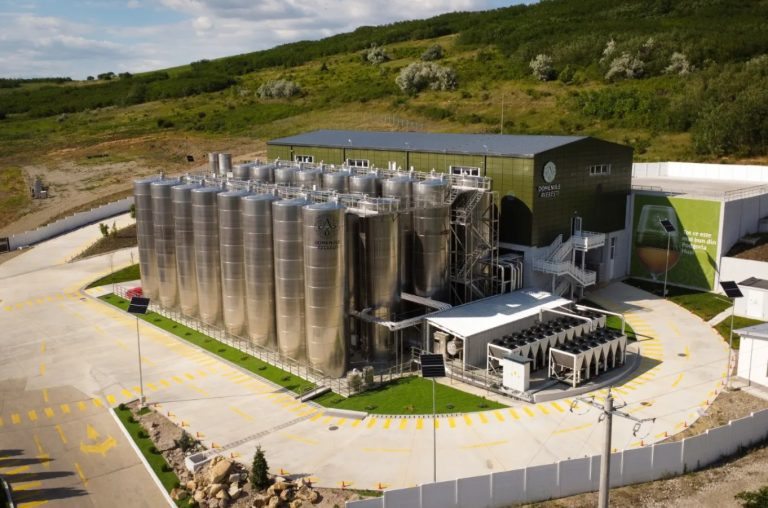
Tasting? Of Course! A History Tasting…
Back among the tanks, we admire a 2024 Sauvignon Blanc, a 2023 dry Busuioacă, a Fetească Neagră… and continue in an annexe with sparkling wines and Zghihară.
The tasting notes aren’t even necessary; the wines are clean, bright, joyful, and inviting you to relax and enjoy life.
Only someone with a bit of Moldavian soul could truly capture the deep connection between these flavours and this place.
This is where Busuioacă and Zghihară were born and reborn, and where Fetească Neagră has its roots. Some say the history goes back to the Cucuteni culture, and with a glass of wine in hand, we have no reason to doubt it.

You Have to Go to Averești Estates to Understand the Place
At Averești Estates, things are done solidly, with the future in mind, and you can feel it. But you have to see it for yourself.
Wine always tastes different at the winery, true everywhere, but here, you have the chance to discover what Busuioacă and Zghihară taste like at home, in their air, among their people.
Try it, and you’ll find that what you’ve learned from a bottle bought in a store is important, but incomplete. Without the air, sun, and people of its birthplace, every wine loses a small piece of its soul.
So one day, with a prior booking, get in the car and take a few hours to discover this hidden treasure. We went, and we can guarantee it’s worth it!

